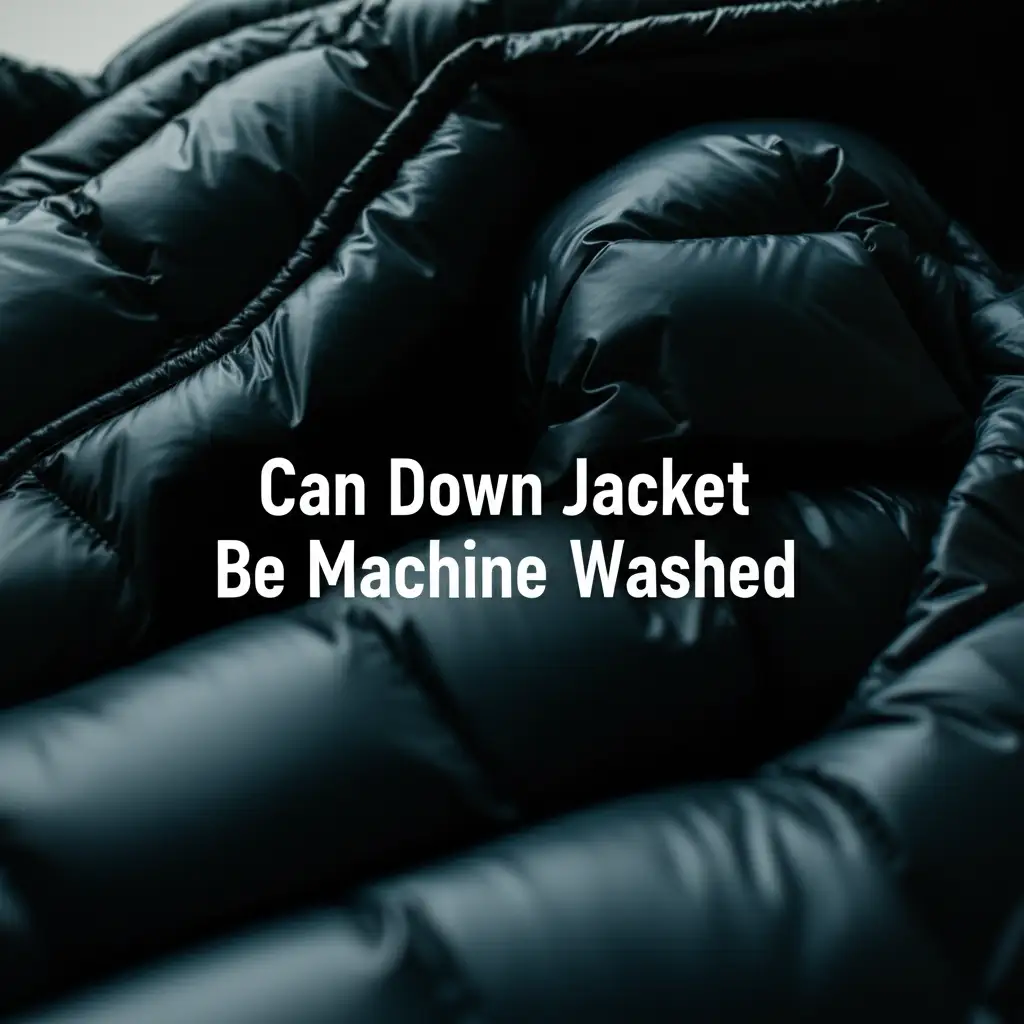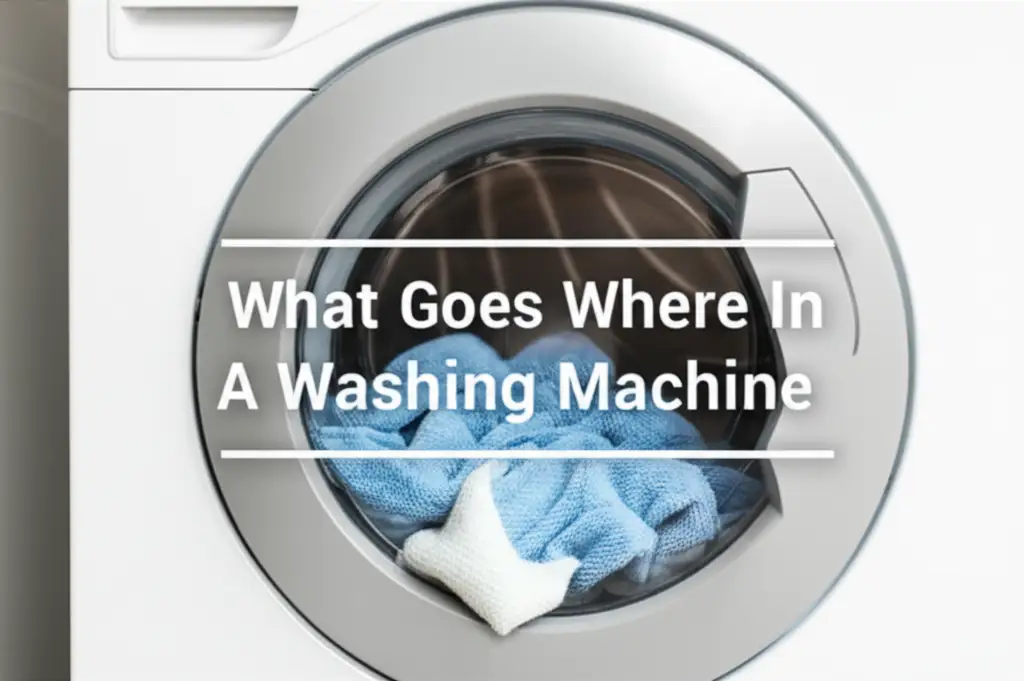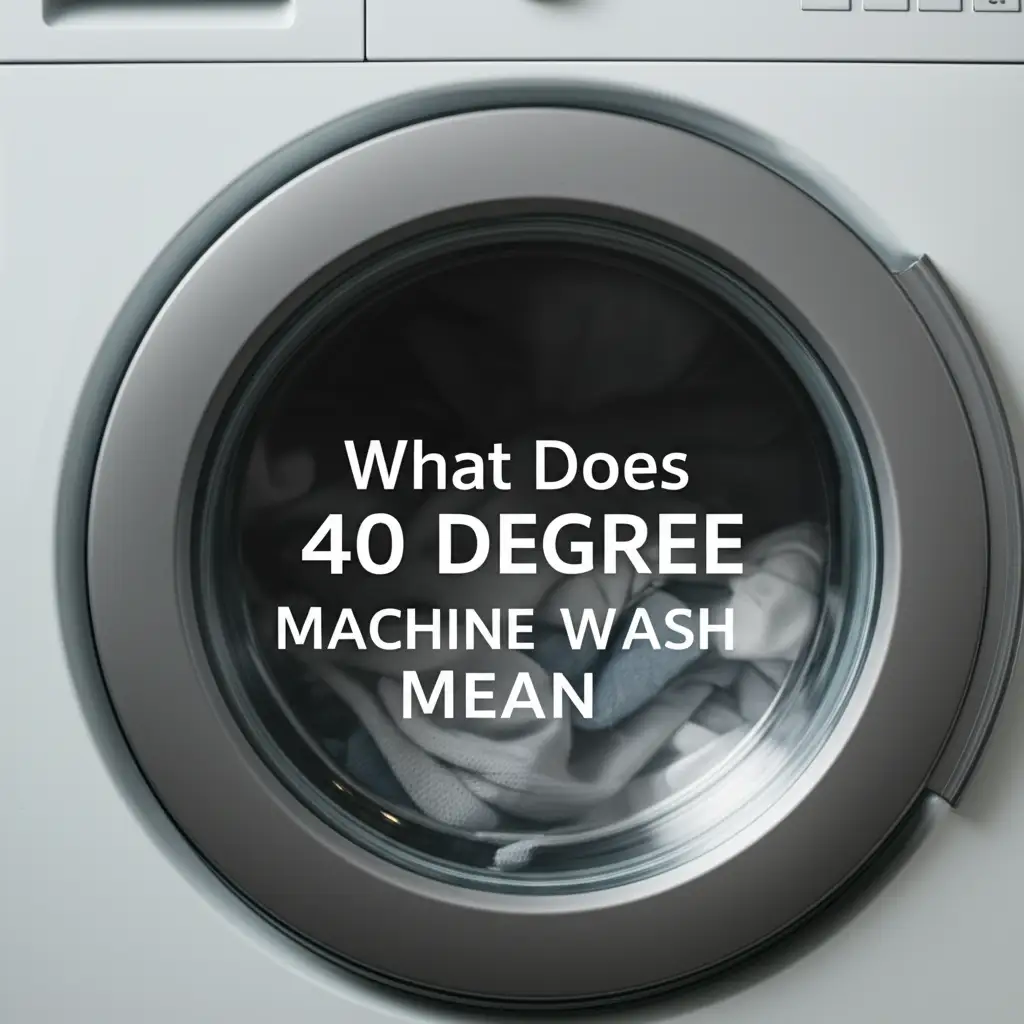· Elira Thomsen · Laundry Care · 12 min read
What Are The Compartments On A Washing Machine

Understanding Your Washing Machine’s Compartments
Have you ever stared at your washing machine’s detergent drawer, wondering where everything goes? You are not alone. Many people simply dump all their laundry products into one spot. This can lead to less-than-perfect results or even damaged clothes.
Knowing what are the compartments on a washing machine is a key step. It helps you get cleaner clothes and keeps your appliance running well. Each compartment has a specific job. It ensures your detergent, fabric softener, and bleach dispense at the correct time. In this guide, I will help you understand these hidden helpers. We will explore each type of compartment. You will learn how to use them properly for a smarter laundry routine.
Takeaway
- Correctly using your washing machine’s compartments improves cleaning.
- Measure laundry products precisely for best results.
- Regularly clean dispensers to prevent buildup and issues.
- Different compartments exist for main wash, pre-wash, softener, and bleach.
Washing machines feature specialized compartments to dispense laundry products. These compartments ensure each additive, like detergent or fabric softener, enters the wash cycle at the right moment. This optimizes cleaning and fabric care. Understanding their specific roles helps you achieve perfectly laundered clothes every time.
The Core: Detergent Compartments Explained
The detergent compartment is perhaps the most important one. It ensures your clothes get clean. Most washing machines, especially front-loaders and some top-loaders, have a pull-out drawer. This drawer usually contains at least two distinct sections for detergent. These sections are for pre-wash and main wash cycles.
The main wash compartment is for your primary cleaning agent. This is where the bulk of your detergent goes. Whether you use liquid or powder, this section is designed to release it during the main wash cycle. This ensures maximum cleaning power when clothes need it most. Improper use can leave residue or prevent thorough cleaning.
The pre-wash compartment, if present, is a smaller section. It is for a small amount of detergent or a pre-treatment solution. This detergent is released at the start of the wash. It helps loosen heavy dirt or stains before the main wash begins. This is very useful for heavily soiled items like work clothes or muddy sports gear. It adds an extra layer of cleaning. Many people do not use this section. However, it can make a big difference for tough loads. Knowing what goes where in a washing machine includes understanding these specific detergent roles.
Main Wash Detergent Tray
The main wash detergent tray is often the largest section in your dispenser drawer. This is where you put the detergent for your clothes’ primary cleaning phase. Most trays will have a clear max fill line. This helps you avoid overfilling. Overfilling can cause sudsing problems or detergent residue on clothes.
For liquid detergents, some trays have a removable insert or a specific indicator. This helps hold the liquid until it’s time for release. Without this, liquid detergent might drain too quickly. Powder detergents go directly into this section. Always make sure to check your washing machine’s manual. It will show the correct placement for your specific model. Using the right amount and type of detergent here is vital for effective cleaning.
Pre-Wash Detergent Section
The pre-wash detergent section is for highly soiled items. This small compartment prepares heavily dirty clothes. It uses a small amount of detergent. This detergent activates early in the wash cycle. It helps break down tough dirt or stains.
You do not need to use the pre-wash section for every load. Use it for items with dried mud, significant grease, or ground-in grime. Adding a small amount of detergent here can save your main wash cycle from being overwhelmed. It helps ensure a deeper clean. For example, if I have muddy gardening clothes, I always use this feature. It prevents dirt from redepositing on other clothes during the main wash.
Softening Up: The Fabric Softener Compartment
Beyond cleaning, washing machines also care for your fabrics. The fabric softener compartment is key for this. This section is specifically designed for liquid fabric softener. It is separate from the detergent compartments. This is important because fabric softener works best when added during the rinse cycle.
The compartment typically has a siphoning mechanism. This draws the softener into the drum at the correct time. If you add softener with detergent, it can become ineffective. The detergent would wash it away. Or it might leave sticky residue on your clothes. Always check the fill line. Overfilling can cause the softener to dispense too early. It might even spill into other compartments.
Using the fabric softener compartment correctly ensures soft, fresh-smelling clothes. It also helps reduce static cling. Many people face issues with softener not dispensing or leaving marks. This often happens due to incorrect filling or a clogged compartment. Regular cleaning helps prevent these problems. Keeping this part of your machine clean is just as important as cleaning the drum. You can learn more about general machine upkeep, like [how to clean a top loader washing machine](https://cosyhomecreation.com/how-to-clean-top-loader-washing machine), to ensure all parts work well.
Brightening Power: The Bleach Compartment
For many laundry loads, bleach provides extra cleaning and whitening power. Washing machines have a dedicated bleach compartment for this purpose. This compartment is specifically for liquid chlorine bleach. It ensures the bleach is added safely and at the correct time. Bleach is a powerful chemical. Adding it directly to clothes can cause damage or discoloration.
The bleach compartment typically dispenses the bleach during the wash cycle. It is usually after the detergent has dissolved. This allows the detergent to do its initial cleaning. Then the bleach can work on stains or to whiten. You should never mix bleach with other laundry products in the same compartment. This can create dangerous fumes or reduce effectiveness. Always follow the manufacturer’s guidelines for dilution and usage.
If your machine has a bleach compartment, use it. Do not pour bleach directly onto your clothes. This can leave permanent spots or weaken fabrics. For alternative sanitizers or stain removers, you might wonder about other options. For instance, is it ok to put vinegar in your washing machine for cleaning or deodorizing? The answer is yes, but vinegar goes directly into the softener compartment or drum, not the bleach compartment. This emphasizes the importance of using each compartment for its intended purpose.
Beyond the Basics: Specialized Compartments & Features
Modern washing machines offer more than just basic compartments. Some models have specialized features to enhance your laundry experience. These designs often cater to specific types of detergents or advanced washing needs. Knowing about them helps you fully use your appliance.
One common specialized feature is the liquid detergent insert. Many detergent drawers are designed for both powder and liquid. A removable insert or flap adjusts the compartment for liquid detergent. This prevents liquid from draining too fast. Always ensure this insert is correctly positioned for liquid use. If not, your liquid detergent might wash away before the cycle begins.
Another advancement is the automatic dispensing system. Some high-end machines have large reservoirs for detergent and softener. You fill these reservoirs, and the machine automatically dispenses the correct amount for each load. This eliminates manual measuring for every wash. It ensures precise dosing based on load size and soil level. This feature is very convenient. It helps prevent over-dosing, which saves detergent and protects your clothes. Machines like those by LG often feature advanced dispensing. Understanding how to clean an LG HE washing machine also involves knowing their specific dispenser care.
For those using detergent pods or capsules, it’s important to note. These usually go directly into the washing machine drum. Do not put them in the dispenser compartments. The compartments are designed for liquid or powder detergents. Pods need direct contact with water to dissolve properly at the beginning of the wash. Putting them in a dispenser might prevent them from dissolving correctly. This could leave residue on your clothes or in the machine. Sometimes, you might need to access parts of your machine for cleaning or troubleshooting. Knowing how to remove the middle part of a washing machine can be useful for deep cleaning specific dispenser components.
Why Correct Compartment Use Matters for Laundry Results
Using the right compartments for your laundry products is not just about following rules. It directly impacts how clean your clothes get and how long your machine lasts. Each compartment serves a precise function in the wash cycle. When you use them correctly, you ensure optimal performance. This leads to brighter, cleaner, and better-cared-for fabrics.
First, proper compartment use ensures accurate dispensing timing. Detergent needs to enter early in the wash to break down dirt. Fabric softener needs to enter during the rinse to condition fibers. Bleach dispenses after detergent has done its work. Mixing products or adding them at the wrong time can neutralize their effects. It can also cause undesirable reactions. For example, mixing bleach and certain detergents too early might reduce their effectiveness or create unwanted residues.
Second, correct use helps prevent residues and stains on clothes. If detergent is not fully dissolved or dispensed correctly, it can leave white streaks. Fabric softener can leave sticky blue marks if poured directly onto fabrics. These residues are hard to remove. They can even attract more dirt over time. Using the dedicated compartments prevents direct contact and allows for proper dilution and distribution. This protects your garments from damage.
Finally, proper compartment usage extends the life of your washing machine. Incorrectly added products can lead to buildup inside the dispenser and hoses. This buildup can cause clogs or mold growth. Clogs restrict water flow or product dispensing. This can strain your machine’s pump and internal parts. Regular and correct use, along with proper cleaning, maintains the integrity of your appliance. It prevents costly repairs in the long run. Caring for your entire machine, including cleaning components like the agitator, contributes to its overall health. For example, how to clean a washing machine agitator is another important maintenance task.
Maintaining Your Washing Machine Compartments
Cleaning your washing machine compartments is crucial. It keeps your appliance working its best. Over time, detergent, fabric softener, and bleach residues can build up. This buildup can lead to clogs, mold, and unpleasant odors. It also affects how well your laundry products dispense. A dirty dispenser may not release products properly. This can leave your clothes less clean or with residues.
I make sure to clean my dispenser drawer regularly. For most machines, the entire drawer can be removed. Pull it out completely. Then, wash it under warm running water. Use a small brush, like an old toothbrush, to scrub away any sticky residue or mold. Pay close attention to the corners and crevices. These spots often harbor buildup.
You should also clean the housing where the drawer sits. Residue can accumulate here too. Use a damp cloth to wipe inside. Check the nozzles where water enters to flush out the products. These can get blocked. For stubborn mold, a solution of equal parts white vinegar and water works wonders. Spray it on, let it sit for a few minutes, then scrub and rinse. This simple maintenance step improves efficiency. It also prevents your machine from smelling musty. For general machine cleaning tips, refer to guides like how to clean a top loader washing machine. If your machine has removable components for deep cleaning, knowing how to remove the middle part of a washing machine can also be helpful for thorough maintenance.
FAQ Section
Q1: Can I put detergent directly into the drum?
Yes, for some detergents like pods or capsules, direct placement in the drum is required. For liquid or powder detergents, it is generally better to use the designated dispenser. The dispenser ensures the product dissolves and dispenses at the correct time in the cycle, preventing residue on clothes.
Q2: Why is my fabric softener compartment full of water?
This often happens due to a clog in the compartment or its siphon tube. Residue from fabric softener can build up, blocking the drain path. Clean the compartment thoroughly. Remove the drawer and scrub all parts, including the siphon cap, to clear any blockages.
Q3: How often should I clean the detergent dispenser?
It is recommended to clean your washing machine’s detergent dispenser monthly or every few weeks. This prevents sticky buildup, mold, and mildew. Regular cleaning ensures the proper flow of laundry products. It also keeps your machine smelling fresh and operating efficiently.
Q4: Can I use powder detergent in a liquid-only compartment?
No, you should not use powder detergent in a compartment designed specifically for liquid detergent. Liquid compartments often lack the proper drainage or mixing mechanism for powder. This can lead to clogs, undissolved powder, and residue on your clothes. Always follow your machine’s instructions.
Q5: What if my washing machine doesn’t have a bleach compartment?
If your washing machine lacks a dedicated bleach compartment, you can usually add liquid bleach manually. Wait for the machine to fill with water and agitate for a few minutes, then dilute the bleach with water in a separate cup and slowly pour it into the detergent dispenser or directly into the drum. Check your manual for specific guidance.
Q6: Do all washing machines have the same compartments?
No, not all washing machines have identical compartments. The design and number of compartments vary by model and brand. Front-loaders typically have pull-out drawers with distinct sections. Some top-loaders may have a single dispenser or a central agitator with a cup for liquid additives. Always consult your machine’s user manual.
Conclusion
Understanding what are the compartments on a washing machine is a simple yet powerful step. It can transform your laundry routine. Each small section in your machine’s dispenser drawer serves a unique purpose. It ensures your detergent cleans effectively. It also makes sure your fabric softener conditions properly. The bleach whitens safely.
I have learned that using these compartments correctly means cleaner clothes. It also means less residue and a longer lifespan for my washing machine. You prevent issues like clogs and unpleasant odors by using them as intended. This also saves you from wasting valuable laundry products. Embrace the power of these compartments. Read your washing machine’s manual. It provides specific instructions for your model.
By mastering the compartments, you gain control over your laundry. You achieve optimal results with every wash. This small effort makes a big difference in the quality of your laundry and the maintenance of your appliance. Make smart use of these features. Your clothes, and your washing machine, will thank you.





